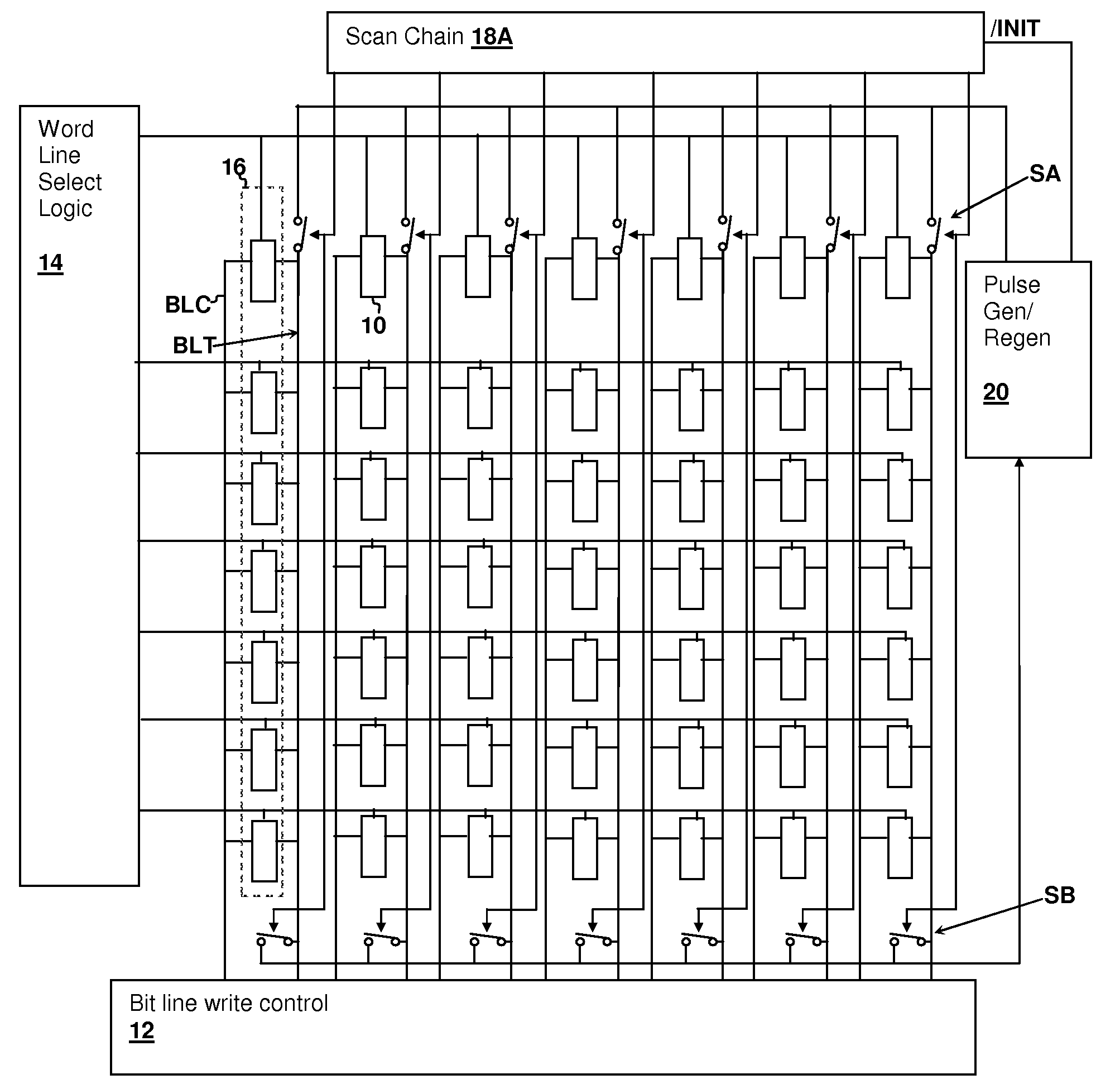Pulsed ring oscillator circuit for storage cell read timing evaluation
a technology of storage cell and oscillator, applied in the direction of noise figure or signal-to-noise ratio measurement, instruments, nuclear elements, etc., can solve the problem that the oriented circuit for performing delay tests does not provide an independent measure of read timing, and the actual measurement of the internal read timing of memory cells is a challenge, so as to achieve accurate determination of storage cell read timing
- Summary
- Abstract
- Description
- Claims
- Application Information
AI Technical Summary
Benefits of technology
Problems solved by technology
Method used
Image
Examples
Embodiment Construction
[0021]The present invention concerns a test circuit for evaluating read strength and read timing of static storage cells, e.g., registers or static memory cells, in order to facilitate design improvement and determination of read delay and read cycle timing margins. The read delay of a single storage cell is measured by generating a pulse on one of the bitlines connected to the storage cell, which is enabled by enabling the wordline of the row of the storage cell. The cell state is preset so that the bitline being pulsed is in a state opposite the bitline pre-charge state, and the other bitline may be strongly held in the pre-charged state, so that the storage cell does not change state. The difference between the ring oscillator frequency with the wordline enabled and the wordline disabled is substantially due to the additional storage cell read current, and therefore differences in frequency between storage cells under test provides a measure of read strength / read delay variation....
PUM
 Login to View More
Login to View More Abstract
Description
Claims
Application Information
 Login to View More
Login to View More - R&D
- Intellectual Property
- Life Sciences
- Materials
- Tech Scout
- Unparalleled Data Quality
- Higher Quality Content
- 60% Fewer Hallucinations
Browse by: Latest US Patents, China's latest patents, Technical Efficacy Thesaurus, Application Domain, Technology Topic, Popular Technical Reports.
© 2025 PatSnap. All rights reserved.Legal|Privacy policy|Modern Slavery Act Transparency Statement|Sitemap|About US| Contact US: help@patsnap.com



